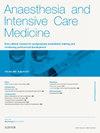Tropical diseases and anaesthesia
IF 0.3
Q4 ANESTHESIOLOGY
引用次数: 0
Abstract
The range of infectious diseases encountered whilst working in resource-limited settings varies enormously depending on where in the world one is working, although the majority of low- and middle-income countries lie within the tropics. Human immunodeficiency virus (HIV), tuberculosis (TB) and malaria are commonly encountered when working in tropical countries and may have implications upon the conduct of anaesthesia, either as a direct result of the condition, or due to interaction with the drugs used in its management. Other infections, such as dengue, are less likely to be encountered in a patient undergoing anaesthesia but may be seen in patients in a high-dependency or intensive-care unit. Furthermore, the chronic effects of some of these diseases may impact upon anaesthesia or have complications that require surgery. It is essential therefore that the anaesthetist working within these populations has an appreciation of the tropical diseases that are endemic, set against the wider backdrop of a resource-limited population where malnutrition, poorly managed non-communicable disease and trauma may all complicate the clinical picture.
热带病和麻醉
尽管大多数低收入和中等收入国家位于热带地区,但在资源有限的环境中工作时遇到的传染病范围因工作地点的不同而有很大差异。在热带国家工作时经常遇到人类免疫缺陷病毒(艾滋病毒)、结核病(结核病)和疟疾,它们可能对麻醉的实施产生影响,这要么是病症的直接结果,要么是与治疗中使用的药物相互作用造成的。其他感染,如登革热,不太可能发生在接受麻醉的患者身上,但可能发生在高依赖性或重症监护病房的患者身上。此外,其中一些疾病的慢性影响可能影响麻醉或产生需要手术的并发症。因此,在这些人群中工作的麻醉师必须了解流行的热带病,而在资源有限的人群中,营养不良、管理不善的非传染性疾病和创伤都可能使临床情况复杂化。
本文章由计算机程序翻译,如有差异,请以英文原文为准。
求助全文
约1分钟内获得全文
求助全文
来源期刊

Anaesthesia and Intensive Care Medicine
ANESTHESIOLOGY-
CiteScore
0.50
自引率
0.00%
发文量
152
期刊介绍:
Anaesthesia and Intensive Care Medicine, an invaluable source of up-to-date information, with the curriculum of both the Primary and Final FRCA examinations covered over a three-year cycle. Published monthly this ever-updating text book will be an invaluable source for both trainee and experienced anaesthetists. The enthusiastic editorial board, under the guidance of two eminent and experienced series editors, ensures Anaesthesia and Intensive Care Medicine covers all the key topics in a comprehensive and authoritative manner. Articles now include learning objectives and eash issue features MCQs, facilitating self-directed learning and enabling readers at all levels to test their knowledge. Each issue is divided between basic scientific and clinical sections. The basic science articles include anatomy, physiology, pharmacology, physics and clinical measurement, while the clinical sections cover anaesthetic agents and techniques, assessment and perioperative management. Further sections cover audit, trials, statistics, ethical and legal medicine, and the management of acute and chronic pain.
 求助内容:
求助内容: 应助结果提醒方式:
应助结果提醒方式:


